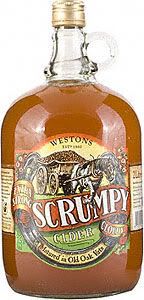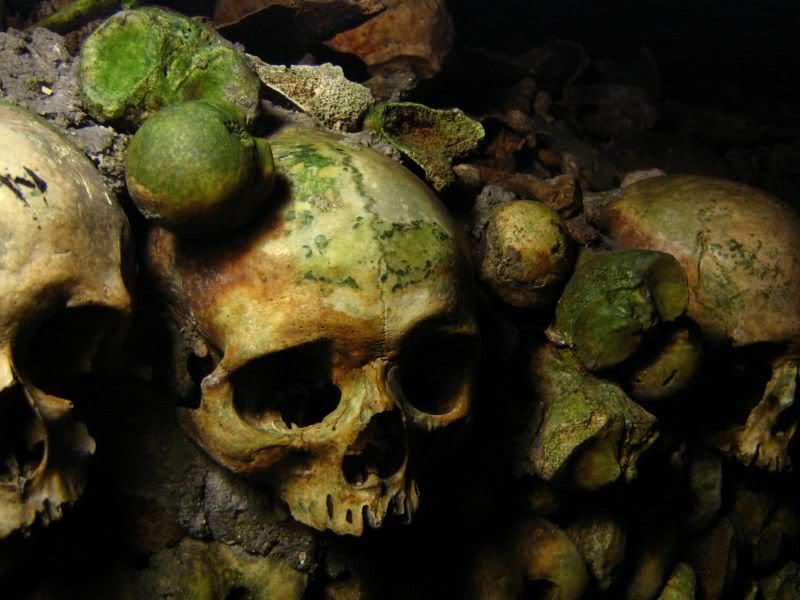
'...I sip a pint of Aspall Draught Suffolk Cyder with Henry Chevallier Guild, a partner in family-owned Aspall and the newly installed chairman of the National Association of Cider Makers.
"Cider has suffered from a serious image problem over the years," he says. "For too long it was seen as the preserve of tramps such as you describe, students and Wurzels. It was to get you drunk, quickly and cheaply.
"Happily that has changed, thanks in part to the efforts of Bulmers and Magners, and cider is currently outperforming every other drinks category. The market doubled in value between 2004 and 2008 and increased in volume by 91 per cent. Cider now accounts for seven per cent of all alcohol sales in the UK, with the trade worth £1.8 billion."
Guild's family has been making cider ever since his five-times great grandfather – Clement Chevallier – arrived in Suffolk from the apple-growing island of Jersey in 1725.
"In those days, cider was held in great esteem and would have been drunk in the grandest of houses," Guild explains. "My dream is to see English cider restored to its rightful place, served in the best hotels and restaurants alongside the finest of wines."'
 Yes, please!Article at the Telegraph
Yes, please!Article at the TelegraphFrom
Chambers' Book of Days for September 25th
CIDER-MAKING "Debarred by the adverse influences of climate from the profitable cultivation of the vine, the northern nations of Europe have endeavoured to supply this deficiency by the manufacture of exhilarating liquors from fruits and grains of various kinds, more congenial to their soil and skies. Of these rivals to the grape, with the exception of John Barleycorn and his sons, there is none which may more fairly claim to contest the palm of agreeableness and popularity than the apple and her golden-haired daughter, the bright and sparkling cider, whom some ardent admirers have even exalted to a level with the regal vintage of Champagne. Hear how John Philips, in his poem of Cider, eulogises the red-streak apple and its genial produce:
'Let every tree in every garden own
The Red-streak as supreme, whose pulpous fruit
With gold irradiate, and vermilion shines
Tempting, not fatal, as the birth of that
Primeval interdicted plant that won
Fond Eve in hapless hour to taste, and die.
This, of more bounteous influence, inspires
Poetic raptures, and the lowly
Muse Kindles to loftier strains; even I perceive
Her sacred virtue. See! the numbers flow
Easy, whilst, cheer'd with her nectareous juice,
Hers and my country's praises I exalt.
Hail Herefordian plant, that dost disdain
All other fields! Heaven's sweetest blessing, hail!
Be thou the copious matter of my song,
And thy choice nectar; on which always waits
Laughter, and sport, and care-beguiling wit,
And friendship, chief delight of human life.
What should we wish for more? or why, in quest
Of foreign vintage, insincere, and mixt,
Traverse th' extremest world? why tempt the rage
Of the rough ocean? when our native glebe
Imparts, from bounteous womb, annual recruits
Of wine delectable, that far surmounts
Gallic, or Latin grapes, or those that see
The setting sun near Calpes' towering height.
Nor let the Rhodian, nor the Lesbian vines
Vaunt their rich Must, nor let Tokay contend
For sovereignty; Phanaeus self must bow
To th' Ariconian vales.'
Like hop-picking in the east, the gathering of apples, for cider, forms one of the liveliest and most interesting of rural operations throughout the year in the western counties of England. These comprise mainly Hereford, Monmouth, and Gloucester shires, Somerset and Devon, the first and last counties more especially representing the two great cider districts of England, and also two separate qualities of the liquor, Herefordshire being noted par excellence for sweet, as Devonshire is for rough cider. Both descriptions, however, are made in the two counties. In the sweet cider, the object of the maker is to check the vinous fermentation as far as possible, so as to prevent the decomposition of the saccharine matter, which in the rough cider is more or less destroyed. The cider lauded by Philips in such encomiastic terms, is the sweet Herefordshire cider; but as a native of the west midland counties, a due allowance must be made for local predilection. It, nevertheless, enjoys a deservedly high reputation, and it is stated as a positive fact that an English peer, when ambassador in France, used frequently to palm it on the noblesse as a delicious wine.
In the manufacture of cider, those apples are preferred which are of a small size and have an acid or astringent taste. Red and yellow are the favourite colours, green being avoided as producing a very poor quality of liquor. Where cider is made in small quantities, or where it is desired to have it of a specially fine description, the apples are gathered by the hand when thoroughly ripe, care-fully picked, and any rotten portions that may appear, cut away.
For general purposes, the fruit is beaten from the trees by the aid of long poles, and collected in baskets beneath, by women and children. It is then spread out in heaps in the open air, and remains exposed to the weather till it becomes mellow. It is then conveyed to the cider-mill, a primitive apparatus, consisting of a stone wheel revolving in a circular trough of the same material, and driven by a horse. The apples are ground as nearly as possible to a uniform consistence, it being especially desirable that the rinds and kernels should be thoroughly pressed, as on the former the colour, and on the latter the flavour of the liquor essentially depend. The resulting pulp, or, as it is termed, pomage, is taken to the cider-press, a machine constructed on the principle of the packing-press, on the floor of which the crushed fruit is piled up, between layers of straw or hair-cloth, and subjected to a severe and protracted pressure. The heap thus formed is styled the cheese. Wooden tubs or troughs receive the expressed liquor, which is then. placed in casks, and left to ferment. This operation being successfully completed, the cider, bright and clear, is racked off into other casks, which are allowed to stand in the open air till the ensuing spring with their bungs lightly fixed, but which are then tightly closed. The best time for bottling it is said to be when it is from eighteen months to two years old, or rather when it has acquired its highest brightness and flavour in the cask. If the proper time for doing this be seized, the liquor thus bottled may be kept for a very long period, but, as a general rule, cider is extremely difficult to preserve, from the readiness with which it turns sour, owing to the development of lactic acid.
As a summer drink, cider is a most palatable and refreshing one, though its extended use seems to be confined to the western counties of England, where it occupies the place in popular favour held, in other parts of the country, by beer. The percentage of alcohol which it contains, varies from 5½ to 9. We retain a most affectionate remembrance of the liquor in connection with the fairy nooks of Devon, and the rich pastures of Somerset, through which, some years ago, it was our fortune to ramble. Enchanted land of the west! how our fancies are entwined with thy sunny valleys, deep shady lanes, and the beauty and vigour of thy rustic inhabitants. Long may Pomona shed her choicest blessings on thy head, and her refreshing juices cheer the heart of the thirsty and way-worn traveller!"




 Yes, please!
Yes, please!



 http://www.finecellwork.co.uk/products/show/DeMorganAnimals
http://www.finecellwork.co.uk/products/show/DeMorganAnimals

 Author and editor Nicholas Coleridge with daughter Sophie.
Author and editor Nicholas Coleridge with daughter Sophie. 











 Image: Knole House
Image: Knole House



